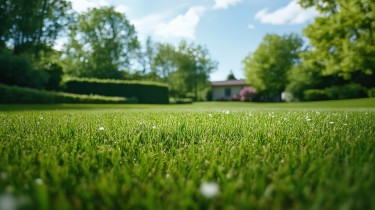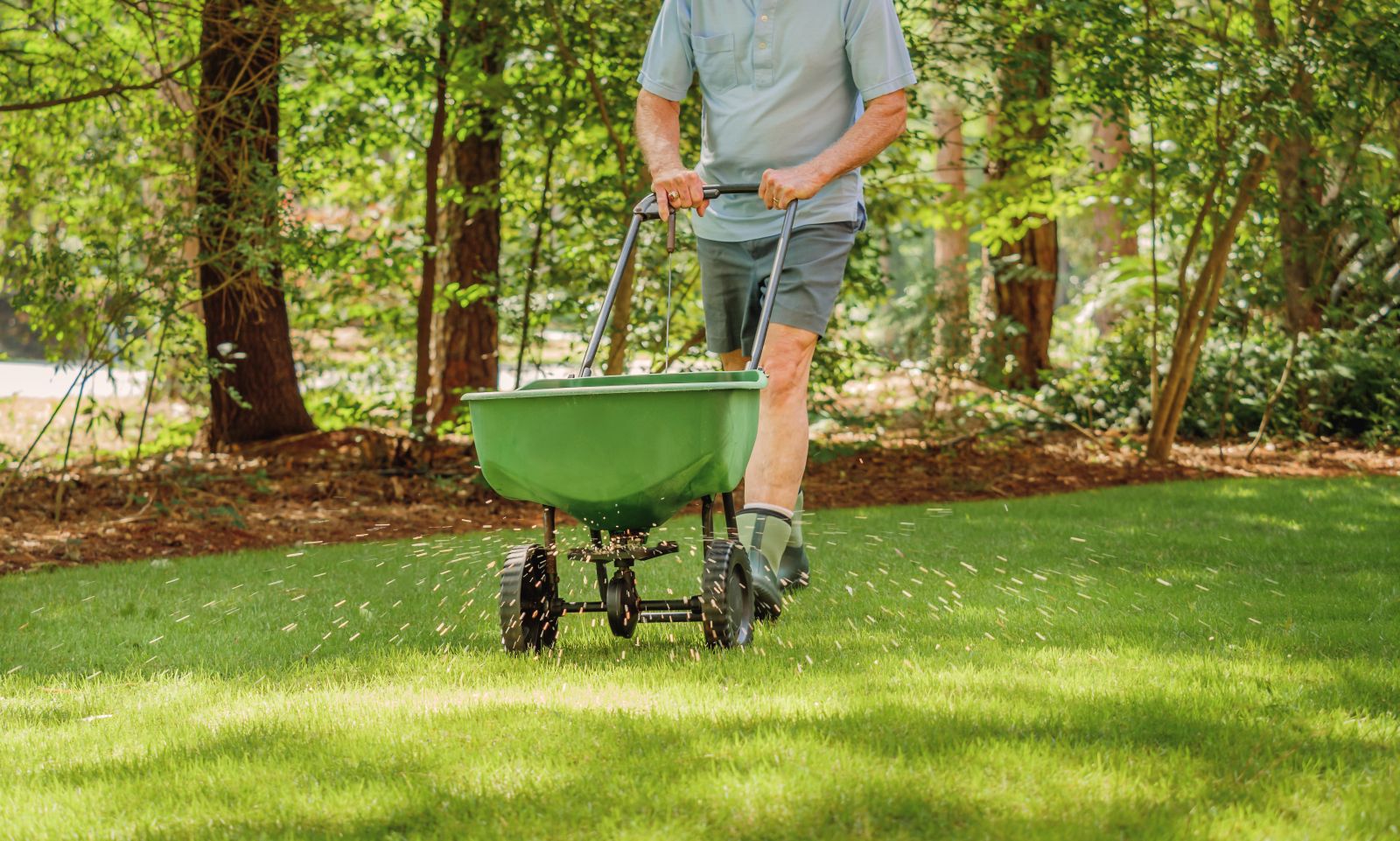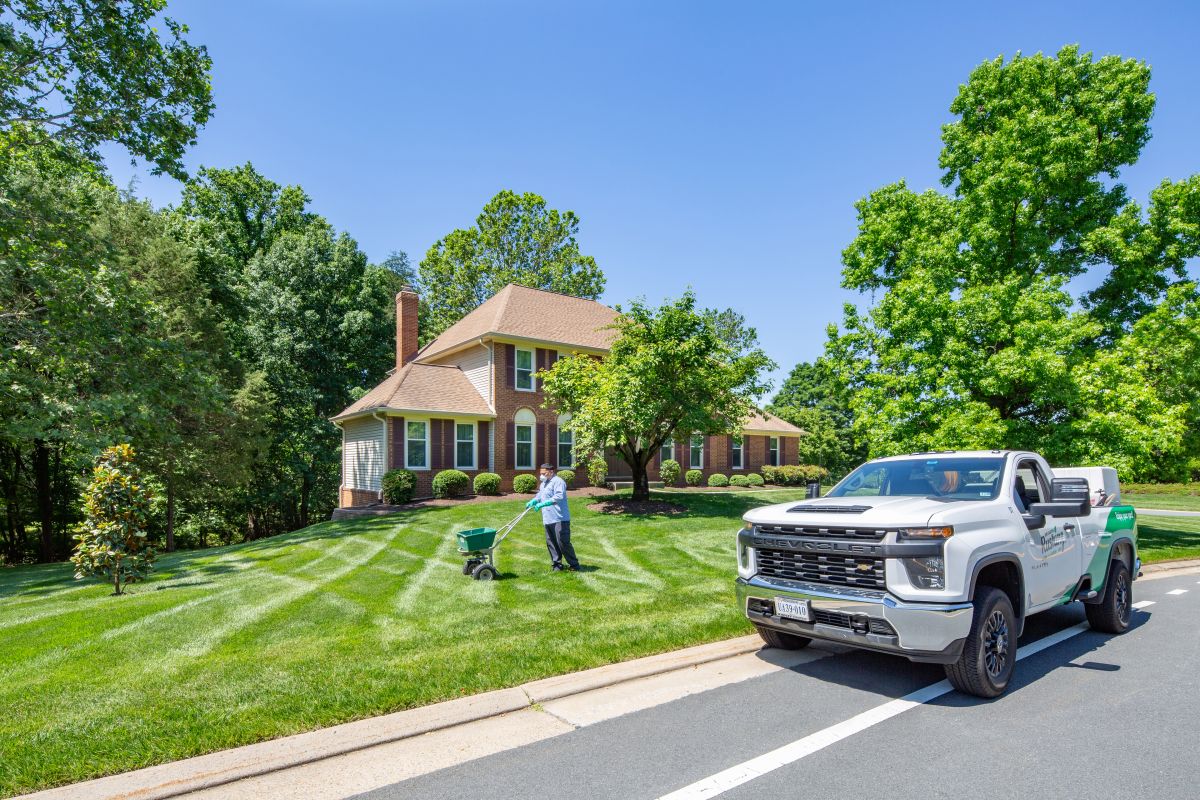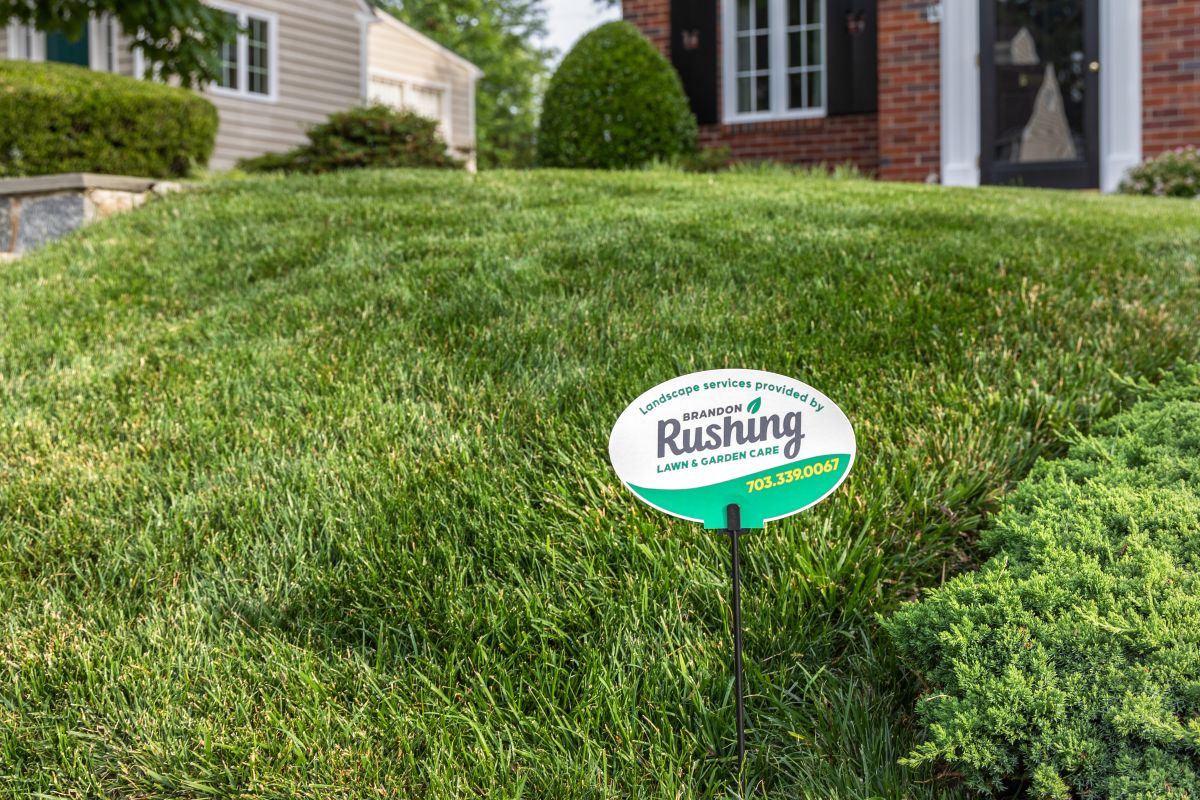

Discover the Secret to a Lush and Healthy Lawn
Read More ›
Blog
Get it right and your lawn will be healthy, green and lush…

If you were talking about May flowers you’d be right… but turf grass is different. In Virginia, feeding and seeding your lawn in the fall offers several benefits, so if you want a lawn that’s lush, green and beautiful this spring, read on!
For a lot of people, fall is their favorite season. It’s still warm enough to be comfortable, and cool enough to help us feel energized. Well, your grass feels the same way!
Fall provides the ideal environment for grass seed germination and establishment. The soil is still warm from the summer months, which encourages seed growth, while cooler air temperatures reduce the stress on young seedlings.
By seeding in the fall, new grassroots have time to develop a strong root system before winter sets in. This gives your lawn a head start in the spring and the strength it needs to survive throughout the hot summer months.
When feeding your lawn in the fall, choose a fertilizer specifically formulated for fall application. These fertilizers typically have a higher potassium content, which promotes root growth and cold tolerance.

If you have bare patches or thin areas in your lawn, weeds can take over. Fall seeding helps fill in those spaces, crowding out the weeds.
Many cool-season weeds, such as crabgrass, are not as robust in the fall. Seeding during this time lets your grass become established without having to compete with these unwanted plants.
Applying the appropriate nutrients at the same time helps strengthen the grass and prepare it for the upcoming winter and subsequent growing season. Fall is a good time to apply weed control, too. Just like your turf grass, weeds are absorbing as much energy as possible in the fall so they can emerge strong and healthy in the spring.
Because lawns in Northern Virginia are typically a blend of cool-season grasses, they undergo a lot of stress during the hot and dry summer months. Seeding in the fall helps repair any damage and rejuvenate the lawn, allowing it to recover quickly so it looks its best in the following spring.
Fall is also a good time to fertilize to build strong, deep roots before the onset of winter, resulting in a healthy and robust lawn in the spring.

There are specific lawn care practices you should follow after seeding and fertilizing your lawn in the fall to ensure the best results.

Specific lawn care practices can vary depending on the type of grass you have, your soil’s composition and the specific conditions in your area. If having a great lawn is important to you, and you don’t have the time or experience to care for it properly, consider signing up for a comprehensive lawn care program.
At Brandon Rushing, our lawn care program includes fall lawn recovery, consisting of core aeration, seeding, fertilizing and fall leaf removal. We also include soil testing and analysis (with recommendations), weekly mowing, trimming & edging and six additional lawn treatments (fertilizer, weed control, lime & insect control) in the core program.
Getting started is easy… book a consultation directly on one of our team members’ calendars.
Together, we’ll get your lawn to look as good — or better — than the neighborhood golf course!
Written by Brandon Rushing, Founder & President
Posted on: August 13th, 2023